Do you have a question about the HP StoreOnce 2900 and is the answer not in the manual?
Overview of the HP StoreOnce Backup system and related documentation.
Details on the HP StoreOnce 2700, 2900, 4500, and 4700 Backup system models.
Specifies the necessary software and hardware for the HP StoreOnce Backup system.
Details the supported network configurations and protocols for the backup system.
Explains the use of HP Integrated Lights-Out 4 for remote management.
Information on Fibre Channel connectivity for supported models.
Lists the required software for backup and restore operations.
Specifies browser requirements for accessing the StoreOnce Management GUI.
Instructions for installing the provided rail kits in server racks.
Guidance on physically mounting the backup system unit in a rack.
Procedure for installing SFP transceivers on network and FC ports.
Steps for connecting power, network, and expansion enclosures.
Instructions for cabling expansion shelves for HP StoreOnce 4500 and 4700.
Steps for powering up the backup system and initial boot sequence.
How to locate and access the system on the network after initial power-up.
Methods for accessing the system's management interface via CLI or GUI.
Defines user roles and default accounts for system access.
Recommendations for securing user and system passwords.
Using the CLI wizard for initial system setup, including network and licenses.
Steps for configuring network settings via the system set config wizard.
Procedure for setting the system's time and date, optionally via NTP.
Guidance on applying licenses for system features and capacity.
Generating a hardware health report for system status.
Finalizing the configuration process and performing a system reboot.
Fundamentals of network configuration, including DNS, Port Sets, and Subnets.
Best practices and considerations for configuring network settings.
Guidance on choosing between CLI and GUI for network configuration tasks.
Mapping physical ports to IP addresses and network configurations.
Commands to display and identify available network ports on the system.
Preparation steps and decisions required before using the network configuration wizard.
Step-by-step guide for configuring network settings using the CLI wizard.
Procedures for changing existing network configurations using CLI commands.
Steps for creating and defining new network configurations via the GUI.
Instructions for modifying existing custom network configurations in the GUI.
Managing the protection status of network configurations.
Configuring system time, date, and NTP server settings.
Information on applying various types of licenses for system functionality.
Process for discovering and adding new storage capacity to the system.
Using SFTP to transfer files and access the system's folder structure.
Procedure for updating the system's software and firmware.
Steps for checking and updating system firmware and BIOS.
Steps for connecting the system to a Fibre Channel SAN.
Procedure for creating Virtual Tape Libraries using Fibre Channel ports.
Explanation and best practices for configuring zoning in Fibre Channel environments.
Setting up media servers to utilize StoreOnce Catalyst for backups.
Steps to enable and configure data encryption during transit on Windows servers.
Installing necessary drivers for tape and medium changer devices for VTL.
Guide for configuring iSCSI initiator for VTL devices on Windows systems.
Description of front panel LEDs for the HP StoreOnce 4700 model.
Explanation of LEDs on the capacity upgrade kits.
Description of front panel LEDs for the HP StoreOnce 4500 model.
Description of front panel LEDs for the HP StoreOnce 2900 model.
Description of front panel LEDs for the HP StoreOnce 2700 model.
Details on the status indicators for hot-plug drives.
Explanation of LEDs for 1 Gbit Ethernet network ports.
Explanation of LEDs for 10 Gbit Ethernet network ports.
Description of LEDs on Fibre Channel interface cards.
Steps to diagnose and resolve issues with network connectivity.
Troubleshooting backup application connectivity to the system.
Identifying and resolving performance issues with the backup system.
Troubleshooting power-related issues and system startup problems.
Diagnosing and resolving issues related to system licenses.
Troubleshooting failures during storage expansion.
Resolving issues when connecting to Network Attached Storage shares.
Diagnosing problems with accessing connected storage shelves.
Demonstrates configuring two subnets on different interfaces with static IP addresses.
Shows configuring two subnets on the same interface with static IPv4 and IPv6.
Illustrates configuring subnets with VLAN tags on different interfaces.
List of other documents providing additional information about the system.
Explanation of formatting conventions and symbols used in the documentation.
Regulatory compliance information for specific regions.
Details regarding warranty terms and support resources.
| Model | HP StoreOnce 2900 |
|---|---|
| Category | Network Hardware |
| Form Factor | 2U |
| Raw Capacity | 12 TB |
| Data Deduplication | Yes |
| Deduplication Ratio | 20:1 |
| Connectivity | Ethernet |
| Power Supply | Dual redundant power supplies |
| Replication | Yes |
| Operating System | HP StoreOnce OS |
| Network Ports | 4 x 1GbE |
| Protocols | CIFS, NFS |
| Target Emulation | VTL |
| Maximum Streams | 32 streams |
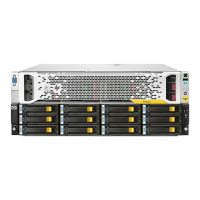

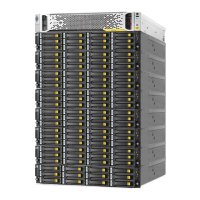
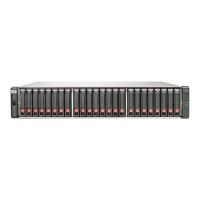


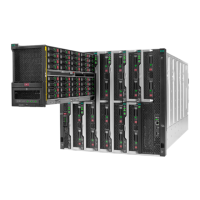

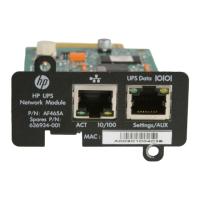
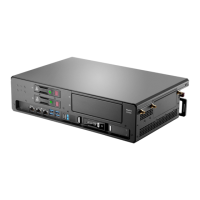
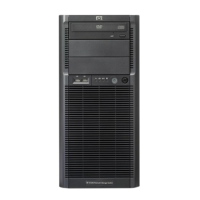

